Tips for growing grass from seed
Growing grass from seed is the least expensive way to transform your home or garden. Here you’ll learn how to plant a lawn in just a few easy steps!
Growing grass from seed
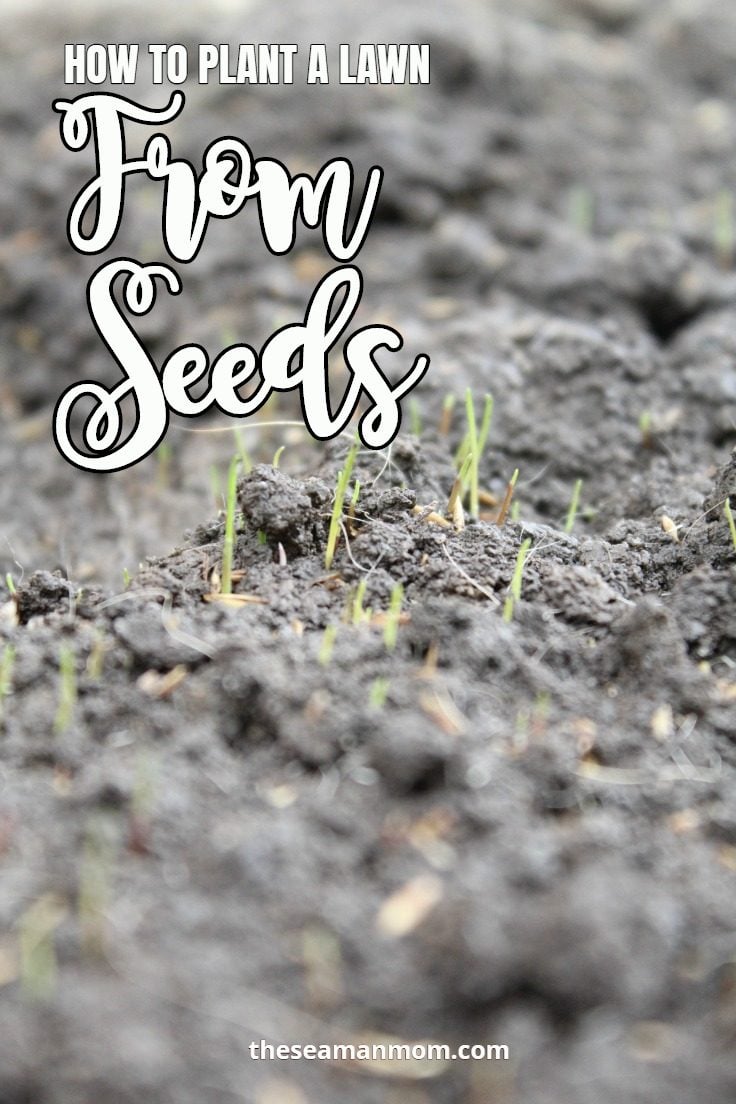
As you may remember from this article I decided to grow my own lawn as in spite of the hard labor, I think it’s very rewarding as well as the least expensive method. Here I’ll share how to plant a lawn from seeds.
I was a little impatient and planted my lawn in the heat of the summer which is the worse time ever so if you have the choice don’t ever start a lawn in summer! It’s not only bad for the seeds and the grass but for yourself too as you’ll have to work at least twice as hard to grow your lawn and keep it healthy.
More gardening articles you will love:
- How to prepare the soil for grass seed
- Tips for caring for a new lawn
- DIY vinegar weed killer
- DIY natural aphid repellent
Determine what type of grass works best for your climate and soil and check the best season to plant the seeds, which might be in spring or fall. For cool-season grasses, the best time to plant is early fall or early spring which is the second bet time. Warm-season grasses are best planted in late spring. Grass seed is best sown from early to mid-autumn as there is less competition from weeds, and the soil is warm not hot and damp from rain, perfect for seeds to germinate.
After you prepared the soil, all you need is good quality grass seed and a little patience. Note: Please do not skip soil preparation, this is vital to get a great looking, inviting and healthy lawn!
Have I convinced you? Let’s see how to plant grass in just a few simple steps!
Planting grass seed
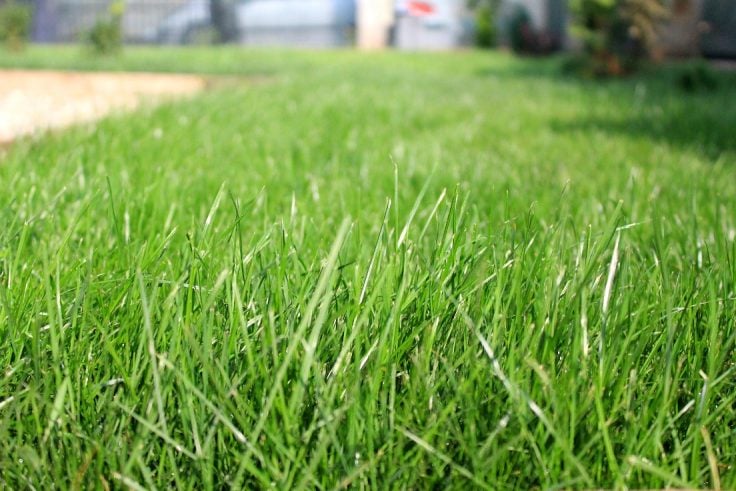
Tools needed:
- rake
- seed spreader (or a hand held one for smaller lawns)
- roller
- sprinkler system
[amazon-related-products keywords=”product suggestions keywords”]
Directions:
Prepare the soil
- Take the time to prepare the soil. This is a very important step for the success of growing grass from seed and, on the long term, for growing a beautiful, thick and healthy lawn!
- Lightly water the soil the night before planting your seed. You need it damp but not saturated.
Spread the seed
- Plant the seed using a seed spreader or your hands. The seed spreader will come in handy when spreading fertilizer later on. Make sure that you properly set your spreader rate for sowing seed if you use one. Disperse the first half of the seed in one direction and then the second half crisscross to the first direction to ensure even coverage. Don’t worry if it seems you’ve spread too much, it’s truly not! Only a small part of these seeds will actually germinate and grow into grass. The ones not healthy or strong enough will not be able to germinate; these will dry and eventually become organic fertilizer for your lawn. Another portion of these seeds will be picked and eaten by birds.

Fertilize
- If your seeds are not already mixed with a fertilizer as mine, use a starter fertilizer that is high in phosphorous which is essential to give your seedlings a head start.
- Lightly rake the area so the seeds and fertilizer mix up with some soil, trying not to disturb the seedbed too much. Don’t bury the seeds any deeper than 1/4″ as they need some light to germinate quickly.
Press seed into soil
- Use a roller to gently push the seeds into soil to ensure good seed-to-soil contact. If you don’t have a roller use a plank and press it down with your feet.
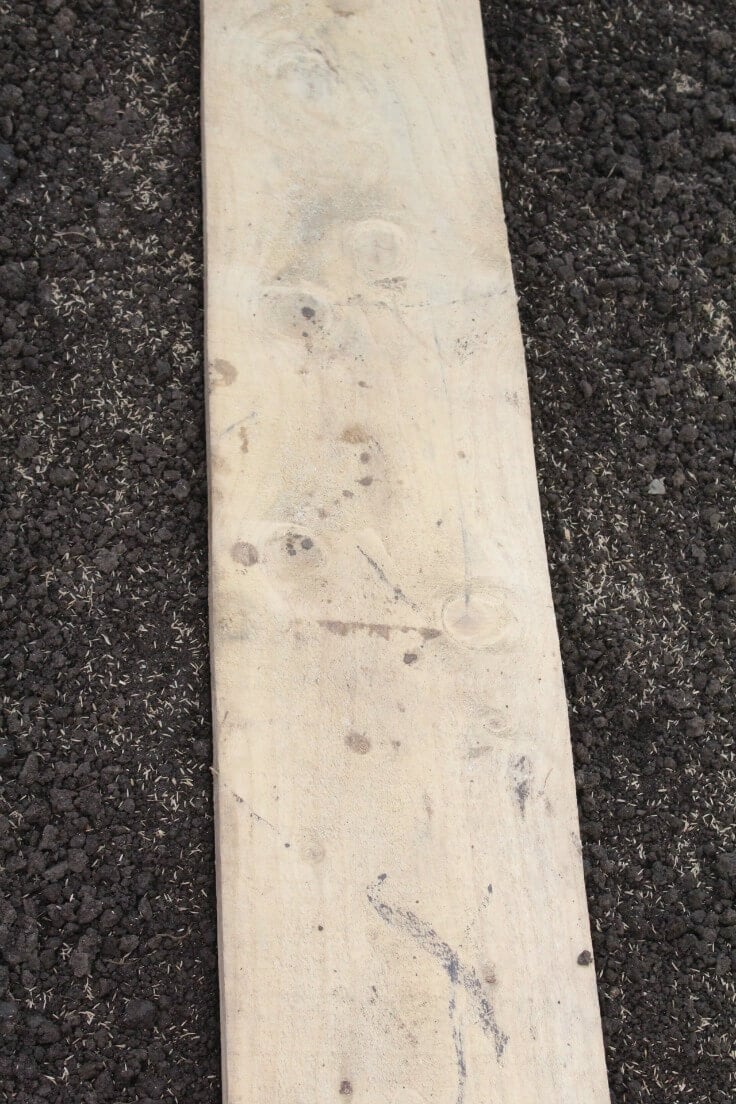
- Optional – add a very thin layer of mulch or hay to protect seeds from being picked by birds. Mulch or hay will also help the soil retain moisture for longer, particularly helpful if you decide on growing grass from seed in summer.
Water on a schedule
- Water abundantly for the first time (wet the soil down to at least 6″ to 8″) but make sure you don’t wash the seed away. Then keep the grass seeds and seedlings constantly moist but not soggy. This is critical as if the seeds dry they’ll die but too much moisture will cause the seeds to rot. Water two to three times a day with a light spray to keep the seeds moist. If you plant your seeds in summer (not recommended), you may need to water up to 5 times a day. If puddles begin to appear on the soil surface stop watering. Once the seeds germinate and the seedlings begin to grow, gradually transition to watering less frequently but more heavily. On the first week after the grass starts to grow water once a day, then once in two days, then as the grass becomes taller and more mature, limit to once or twice a week, depending on how dry the soil is (typically after the first mowing). Watch the grass carefully! If the color starts to go from bright green to dull gray green, the grass needs water.

- Depending on the seed type used, it may take anywhere from 5 days to 4 weeks for the seeds to germinate and the lawn to become fully established. Avoid foot traffic as much as possible until the next season, when the grass is well established. Also try to limit pet access, at least until the second mowing.
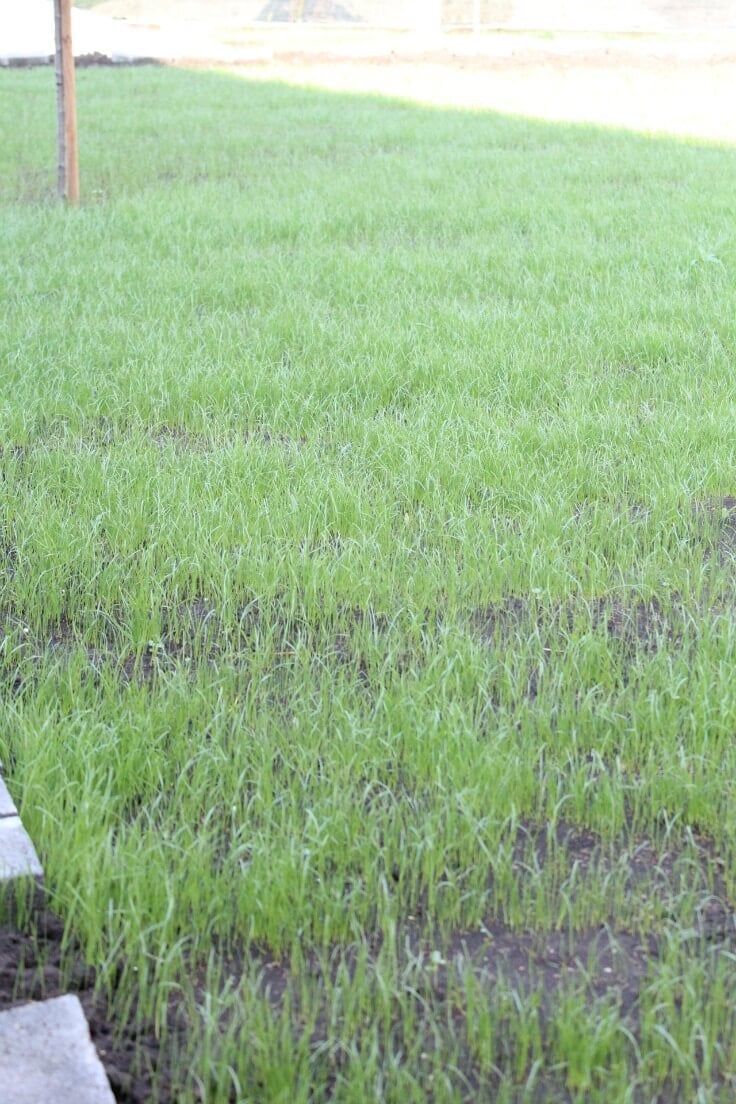
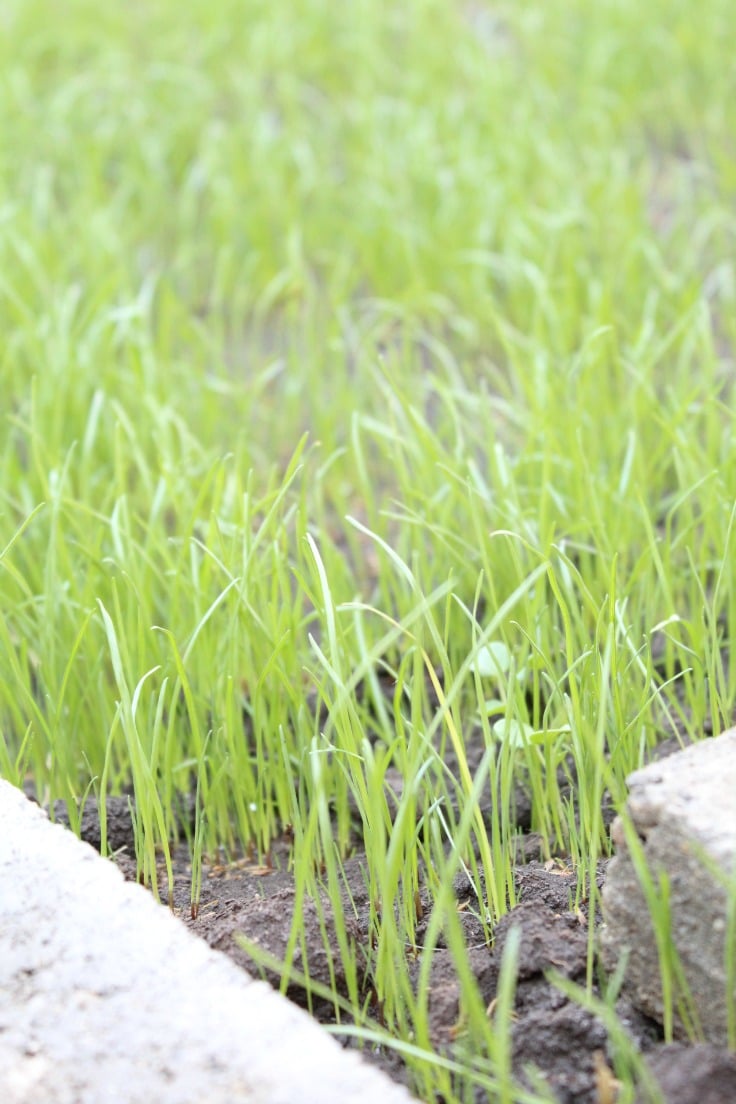
- If after 3-4 weeks, the grass has reached 1″ but there are still bare spots, reseed the areas. Keep repeating the above process until the lawn is thick and you’re satisfied with the results.
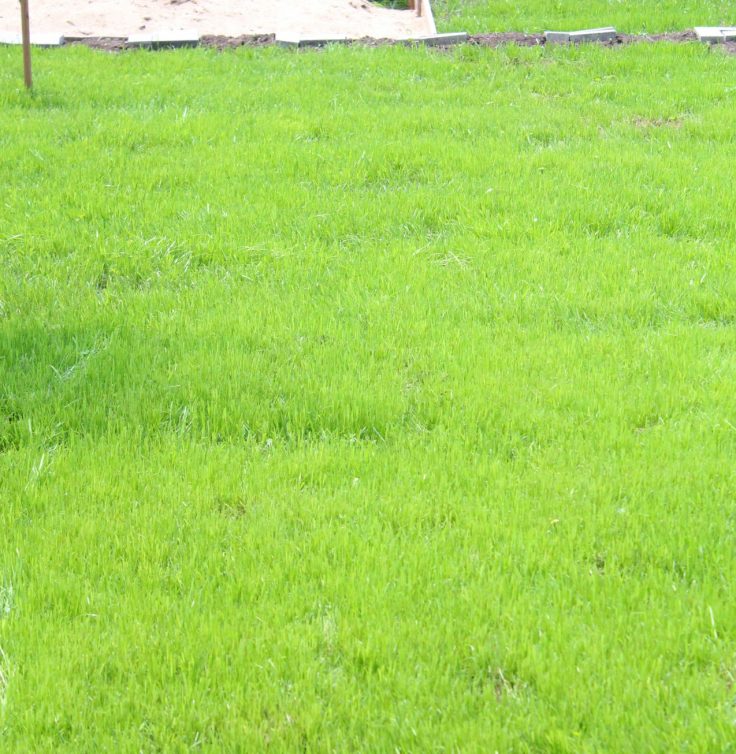
Mow the new grass
- Mow the new lawn when it reaches 3″ to 4″ high, but don’t cut more than 1/3 of its height. Adjust your mower to a high setting to keep the lawn nice and thick. If you cut it too short, the grass gets weak and weeds can sneak in not to mention the grass may dry out and die.

- Apply fertilizer again, 4 to 8 weeks after planting your seeds.
Pin to save for later
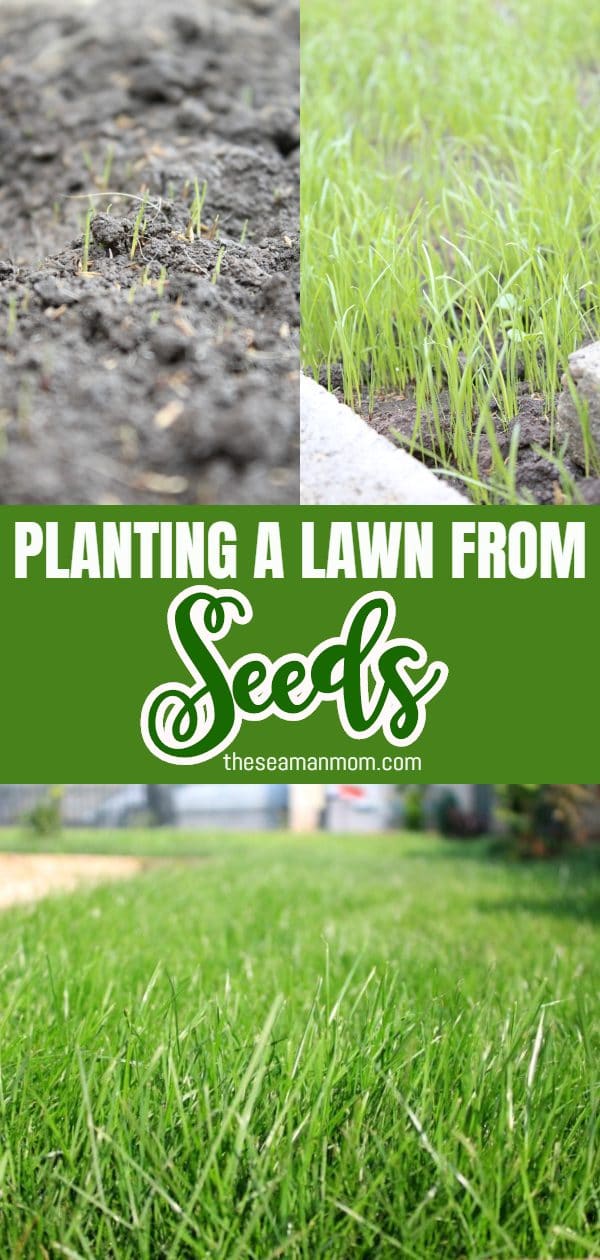
Article may contain Amazon & affiliate links. As an Amazon Associate I earn from qualifying purchases at no additional cost to you.


ABOUT PETRO
Hi, I’m Petro, author and founder of Easy Peasy Creative Ideas. Sewist, crafter, avid DIY-er, foodie, photographer, homemaker and mommy to one. I’m an expert at coming up with quick, clever sewing tips, recycling crafts and simple, easy recipes! You can find my ideas featured in reputable publications such as Country Living, Good House Keeping, Yahoo News, WikiHow, Shutterfly, Parade, Brit & Co and more. Thanks for stopping by and hope you’ll stay for a while, get to know me better and come back another time. Stick around for real fun projects! Read more…